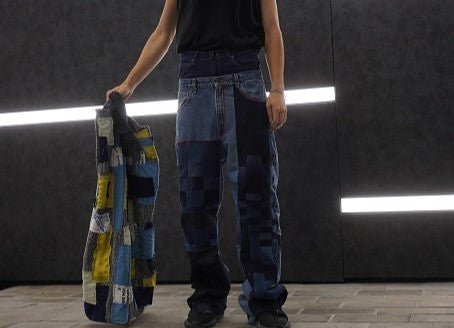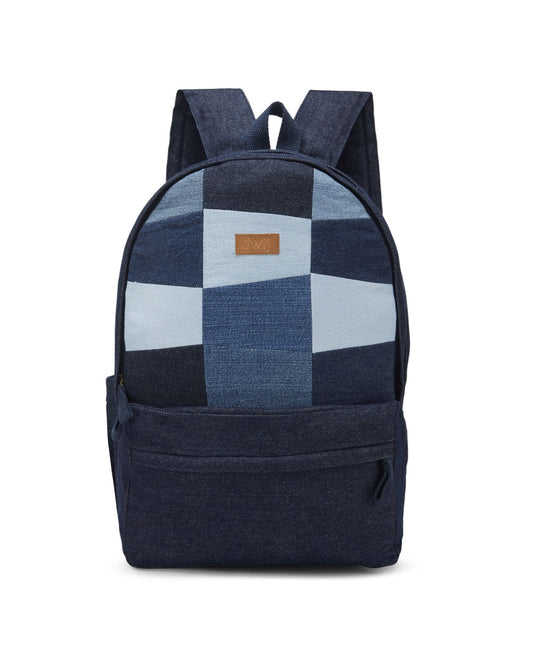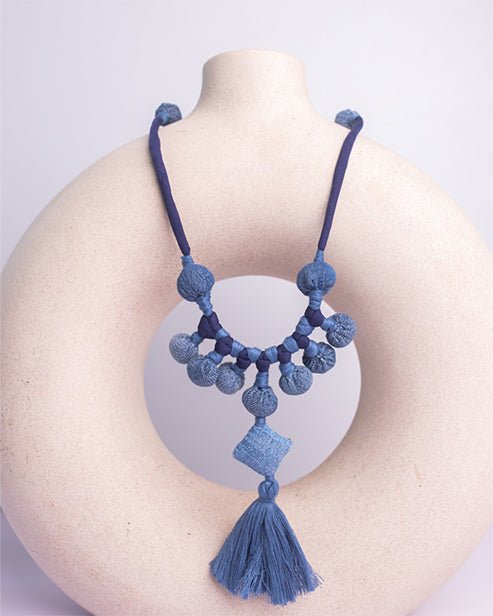We live in a world where environmentalists are speaking their hearts out of their concern to save the environment. And fashion is one of the major industries that impact the world. With fast fashion, the world has undergone immense damage. Rather than following the values of sustainable fashion, people nowadays are trendy, unable to understand how brutally it is impactful not only for the environment but for them too.
A large number of studies have confirmed that practicing sustainable fashion over fast fashion can lead to healthy living. By following the methods of upcycling clothes, you can not only add value to your fashion but also save the environment by being sustainable. But can upcycling save the environment and drive us to sustainability, or is it just a myth? In this blog, we’ll be talking about everything that you need to know about the fashion industry and upcycling clothes.
Fashion Industry: Understanding The Environmental Challenges
Before we begin to talk about upcycling, it is crucial for us to address the challenges faced by the fashion industry. This industry, known for its rapid changes and disposable culture, has contributed significantly to pollution, resource depletion, and immense waste. The cycle of fast fashion, where trends change constantly, has left our planet in distress.
Without wasting another second, let’s talk about major problems associated with the fashion industry that can be reduced by sustainable planning.
-
Fashion's carbon emissions account for a staggering 10% of the global total, surpassing emissions from international flights and maritime shipping.
-
Each year, about 92 million tons of textile waste are generated, with much of it ending up in landfills, releasing harmful chemicals and greenhouse gases.
-
The water used in textile dyeing and finishing is enough to fill 2 million Olympic-sized swimming pools annually.

Upcycling: The Power of Green Transformation in Fashion
At its core, upcycling is all about giving a new life to discarded and unused items. The fact that upcycling is creative and holds an eco-friendly approach that not only reduces waste but also appreciates the value of old products
The process of Upcycling Clothes
Utilizing the material: As we told you before, upcycling gives a whole new life to the clothes that are going to be discarded. Whether it's old jeans transformed into trendy handbags or surplus fabric scraps used for unique designs, upcycled fashion reduces the need for new resources.
Conserving Energy: Upcycling follows the methodology of recycling the cloth, and that saves a lot of energy and produces far fewer greenhouse gases than if it were used to produce something new. It not only gives another life to a garment but also saves the environment.
Reduction of waste: With upcycling, the problem of waste is directly solved. Instead of throwing the items in landfills, where they’ll take an eternity to decompose, upcycling gives them a whole new life.
Approach to Sustainable Fashion Practices
We at Dwij are on a mission to let the world know the potential of upcycling. We truly believe every piece of cloth has its own value; the more it has been used, the more value it holds. Thus, we believe in turning discarded denim jeans into a whole new different product like jeans, bags, jewelry, toys, etc.
Upcycling is more than fashion or wearing stylish clothes. It’s about bringing a complete change to the definition of fashion. Let's delve into how upcycling clothes contributes to a more sustainable planet:
Promotes Circular Fashion
Upcycling works on the sole principle of circular fashion, where clothes are reused, recycled, and revalued. It’s a complete shift away from discarding items after a few wears to owning and valuing clothes.
Conscious Consumption
Whenever you choose an upcycled item, you’re making a conscious decision to promote sustainability. And don’t you think that’s a better way to live a life—a life that holds some meaning and value behind it?
Reducing Water Footprints
Well, if you’ve read our old blogs, we’ve talked about how much water is used to produce clothes. A single piece of denim jeans requires around 1000 liters of water to be made. Upcycled fashion, with its focus on repurposing existing materials, significantly reduces the water footprint of your clothing.
Empowering Local Communities
This is one of the most beautiful aspects of sustainable fashion; it involves local artisans and communities. Upcycling strengthens the social fabric and promotes economic empowerment in regions where it is practiced. You should also know about- The story of Asia’s biggest textile recycling hub
How you can adapt to sustainable fashion in your life
Well, as we’ve talked about above, you’ve read some of the major advantages of upcycling clothes. But you, yourself, can be sustainable and join the upcycling revolution. Here’s how you can improve your way of living:
Search through your wardrobe: The first step for you to be sustainable and to promote upcycling of clothes is by visiting your own closet. Look in your own wardrobe and find the clothes that you think deserve a second life.
Be creative: Think about how you can transform your old clothes. Maybe it's turning old jeans into shorts, or adding some funky patches to an old jacket to match your personality. And that’s what exactly we do. We turn old denim into brand-new products, click here to see.
Promote upcycling brands: To be part of the upcycling revolution, it becomes very important for you to promote upcycling brands. You should prefer buying from brands like ours and spread word-to-word publicity to let the world know the value of upcycled clothes.
So, now that you’ve completely read and understood how upcycling and practicing sustainability can be beneficial for both you and the environment. Do you really think upcycling clothes has a positive impact on the environment?
When we choose upcycled fashion, we're not just investing in our wardrobe; we're investing in a brighter, cleaner future. It's a small yet impactful step towards changing the course of the fashion industry, one upcycled creation at a time. Let’s now embrace sustainable fashion and say a clear NO to trendy and fast fashion brands and clothes. Upcycling is not just a trend; it's a transformational journey that holds the promise of a greener, more beautiful planet.





